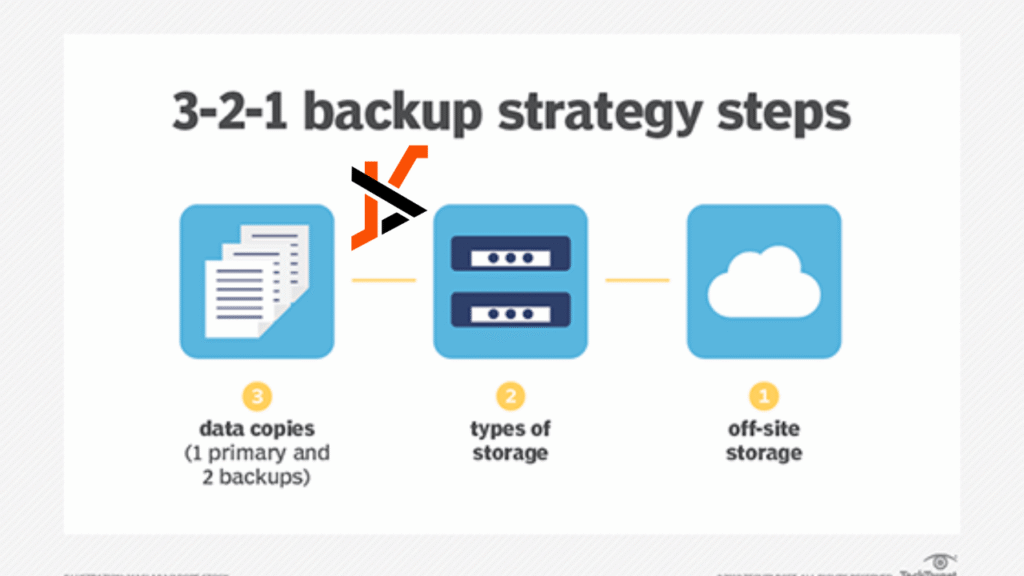All data is critical to business. Losing customer data, financials, and other critical data can result in lost business, regulatory fines, and a damaged reputation. Therefore, most companies maintain a backup strategy. Still, a backup alone doesn’t guarantee fast or reliable recovery.
How will you know if your current backup process is working or not working? Let’s discuss the most salient signs that your backup strategy is in trouble, and how monitoring tools for backups can turn things around.
1. Backup Failures Go Unnoticed
One of the most dangerous scenarios is when backup jobs fail without anyone knowing. Maybe the storage location was full, or the process timed out. If no one checks, you’ll only discover the failure when recovery is urgently needed.
How monitoring helps: A backup monitoring tool provides notifications in real time when jobs fail, caution, or take an exceptionally long time. This early exposure enables IT staff to fix faults before they cause a loss of data.
2. Recovery Takes Too Long
Backing up information is one thing. Restoring it on the fly when disaster strikes is something else. If your staff spends hours (days) locating, validating, and restoring data, the cost of downtime is through the roof.
How monitoring helps: Monitoring your recovery effectiveness and testing backup integrity on a regular basis guarantees your backups are aligned with your RTOs (Recovery Time Objectives). The benefit? Faster, more predictable recoveries.
3. Backups Are Outdated
It’s infuriating when you try to restore work from yesterday and find that your last backup was seven days ago. Old backups create huge data gaps and cause teams to rebuild work or suffer full loss.
How monitoring helps: Backup software ensures that backups are running as planned and notifies you if any cycles are missed. Monitoring also enforces RPOs (Recovery Point Objectives) so your data is never more than your company can absorb.
4. Storage Is Getting Near Capacity
The majority of backup failures are caused by something as simple as running out of storage. Without visibility, backups may fail silently, putting you at risk.
How monitoring helps: Monitoring products track storage usage, predict capacity thresholds, and warn teams ahead of backup failure. This enables trouble-free protection and improved resource planning.
5. Backup Integrity Is Questionable
All backups are not created equal. Corrupted or misconfigured backups might look fine at first, but will fail at recovery time.
How monitoring helps: Backup monitoring software performs integrity tests to verify that backups are restorable. A few platforms even automate test recovery, so you’re certain your data is at your fingertips when you require it.
6. No Centralized Visibility
With hybrid and multi-cloud implementations, backups take place on multiple platforms. With the lack of a single dashboard, IT personnel spend a lot of time switching between dashboards and lose precious insight.
How monitoring helps: Modern monitoring tools combine all the backup activity, such as cloud, on-premises, and hybrid, into a single dashboard. This is easier to manage, less prone to error, and quicker to diagnose.
7. Compliance Gaps Are Popping Up
For compliance-intensive industries like healthcare, finance, and government, it is mandatory to meet stringent data protection standards. Without evidence of good backups, your organization can be audited or fined.
How monitoring helps: Monitoring tools generate rich logs and reports to aid compliance with standards such as HIPAA, GDPR, or SOX. These audit-ready records protect your data and your reputation.
8. IT Teams Waste Too Much Time on Backups
When your IT team spends too much time manually reviewing logs, testing, or debugging failures, your strategy is not optimized. That’s the time they could be spending on creativity instead of firefighting.
How monitoring helps: Automated warnings, tests, and reports conserve time, and IT personnel do less work. They can devote more time to strategic projects knowing that backups are secure.
Turning a Failing Strategy into a Successful One
Recognize warning signs first. The second is adopting a monitoring-first strategy for backups. Below is how to modify your strategy:
- Define Customized RPOs and RTOs: Determine how much data you can tolerate losing and how quickly you need systems restored.
- Auto-Monitoring: Acquire software to monitor backup jobs, storage health, and recovery speeds in real-time.
- Regular Testing: Perform automated test recoveries to ensure your backups are, in fact, recoverable.
- Centralized Management: See all environments monitored at once with monitoring dashboards.
- Be Audit-Ready: Automate compliance-proof reports with zero effort.
The Bottom Line
When you oversee your backups with monitoring solutions, you achieve visibility, automation, and reliability. This is needed to make your data protection plan work when it matters most. The benefit is fewer minutes of downtime, fewer threats, and greater trust in your organization’s resiliency.
Start monitoring now, and transform a failing plan into a future-proofed shield.

